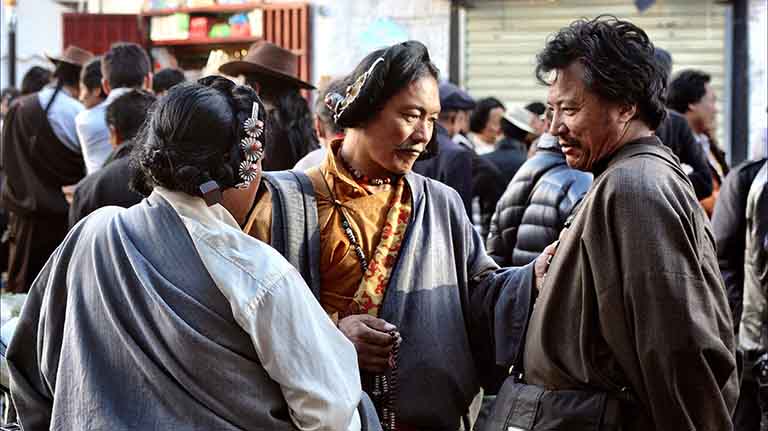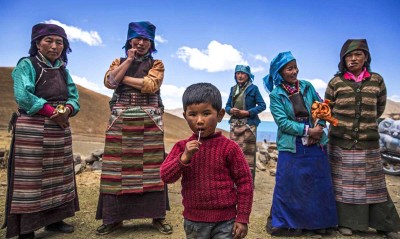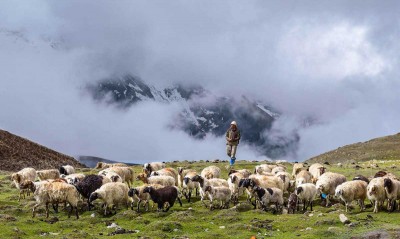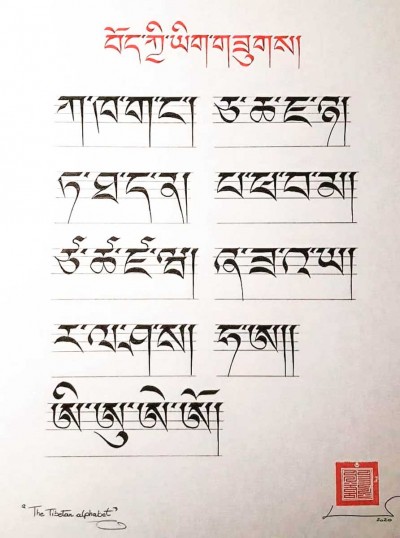
- 08/20/2022
- Himalayan Wander Walkers
Tibetan People, Lifestyle, and Language
When we talk about Tibet and Tibetan, the first things that arise to our mind are mountains, yaks, monks, and high plateaus. Apart from rest of the world Tibetan people have their own culture, language, and unique profession. These days you will see tibetan are scateer in different nations but you will recognise them as tibetan from their lifestyle. Please go through the brief discriptions on the following topics.
Planning trip to Tibet and need help?
Tell us about your trip to Tibet and what you expect from it. We will answer your questions in 24 hours and help you design a trip with a comfortable itinerary to best meet your needs.
Contents [show]
Tibetan People

Generally, Tibetan is also known for Bopa in the Tibetan language. And the Tibetan ethnicity which is found in different Himalayan countries of Bhutan, India, and northern Nepal is known for Borig. Tibetan falls under the category of Mongoloid family people. It is believed that current Tibetans are descendants of different nomadic tribes who migrated from the north and settled along Tibet’s river valleys. Within a Tibetan, there are different inhabitants who are named based on their origin and settlement. They are easily identified from their unique dialects and the way they dress. People living in the highland of the Ngari area are called Topas, the Tsangpas in the west, the Upas from central Tibet, the Horpas of Nagchu(north), southern are the Kongpowas, the Khampas in the east, northeastern Amdowas and the Gyarongwas in the far east.
Every traveler who had toured with Himalayan Wander Walkers to Tibet says Tibetans are optimistic and friendly people. Buddhism is highly practiced by the majority of Tibetan and travelers are strongly advised to respect their customs and belief. In every town, you will find religious monuments like monasteries and Stupa where the locals circumambulate them in the morning and evening. Besides Buddhism Bon and Muslim religions are observed by very minimum people.
Population and Occupation

According to the Chinese census of 2000, the population of Tibetan including areas in western China was estimated to be about 5.4 million. Among the total population, the majority belongs to the inhabitants of Tibet Autonomous Region (TAR). When we talk about the occupation of Tibetan people, animal husbandry is the prime occupation in Tibet. Tibet is well known for its widest highland plateau with the richness of grasses and water sources. You will see the number of nomadic (Dokpa) places in the Qinghai region where the Yaks, sheep, and goats are reared for various purposes. Yaks are used as major means of transportation in Tibet. Animals are domesticated for meat and dairy products like dry cheese, butter, and milk. Some people are semi-nomadic also called Samadok in Tibetan. They are living both by rearing animals and farming. People who only occupied as a peasant are known for Shingpa in the local dialect. Southern Tibet is considered the main agricultural region, stretching sixteen hundred kilometers between the Indus River and Upper Brahmaputra which include Lhasa, Shigatse, and Gyantse.
Tibetan Language

The Tibetan language is known for Bo Kye in the local dialect which is easily understood even by the West Bodish (people speaking Tamangic languages in Nepal, India, and Bhutan). Likewise in the English language, many words are derived from Latin, and some of the Tibetan words are also derived from the ZhangZhung (ShangShung), the early language of western Tibet. Within the Tibetan language, there are two common speech- Shesa (Honorific) and PhelKye (ordinary). The use of these speeches depends upon the speaker and the listener’s social status. Generally, Shesa is expressed to equal or superiors like elders, teachers, parents, and high lamas whereas Phelkye uses it for addressing inferior or oneself.
Though people residing in Tibet have different sub-dialects they share the same language when Tibetan come to meet across minority languages. The Tibetan language originated from Sanskrit. It has 30 consonants in the alphabet, five vowels, and six additional symbols that are written to represent some Sanskrit words. The script can be seen in four different variations of Ume (used in elementary school lever among students), U-Chen (primarily for Buddhist text), Khyug(Joining handwritings), and Bru-Tsha (stylish or decorative writing).
The people who speak English in Tibet are happy to chat with you. It is appreciated by locals when you try speaking Tibetan and greeting them by Tashi Delek. To know more about the 90s culture and lifestyle of Tibet read the book: “My Land and My People”, the Original Autobiography of His Holiness the 14th Dalai Lama.
